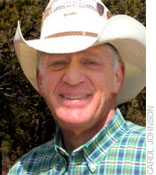
Some headlines continue to cry doom (“Will Fragile U.S. Economy Shatter?” USA Today July 23), while others indicate better times ahead (“In Latest Data on Economy, Experts See Signs of Pickup” New York Times July 13).
Considering this is an election year you can pretty much toss out any economic predictions emanating from either political party. Forgetting simple veracity for the moment, politicians aim to get elected and are therefore likely to say anything they feel will garner voter support.
Since the economy tanked in 2008 all of motorsports has suffered a reversal of fortunes to some extent. NASCAR, which numerous media outlets were already reporting as “topped out” even before the crunch, seems to have taken the biggest hit, at least if what we see on television is to be believed. There can be little doubt spectator attendance has seriously declined at venues as diverse as Daytona, Charlotte, Sonoma, Dover and Indianapolis. At many races, large sponsor banners cover significant seating areas, yet there still remain legions of empty grandstands. More than one media outlet has pegged NASCAR’s decline as high as 30% in ticket sales.
Indycar racing has also suffered at the gate, due at least partially to the series itself, which lacks excitement and recognizable American driver names. The series may be as international as Formula 1, but that doesn’t get it with an often jingoistic American audience.
While Indycar officials were certainly proud of the attendance and television ratings generated by the Indy 500, they are loathe to recall the so-called good old days prior to the CART-Indycar split, and who can blame them? In those days more than 200,000 paid to see Pole Day and almost 100,000 showed up for Bump Day. In these times the crowd count is closer to 10,000 for Pole Day and considerably less for any bumping action that now comes the following day. And, like it or not, the departure of Danica Patrick to NASCAR has definitely had a negative impact on their TV ratings. She was the hook that drove their coverage, a point insiders at Indycar will acknowledge, even if they do so off the record.
